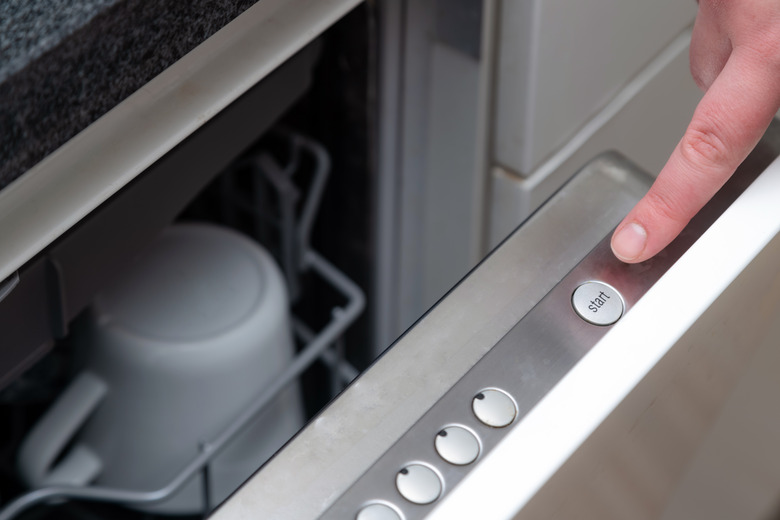How To Fix A Dishwasher Overflowing Into A Sink
We may receive a commission on purchases made from links.
When water backs up into your sink while the dishwasher runs, there's a clog somewhere. To fix a dishwasher overflowing into a sink, you simply need to find this clog and remove it. There are several areas between the sink and the dishwasher where the clog could occur, so start with some of the easier fixes.
Dishwasher Overflow Simple Fixes
Dishwasher Overflow Simple Fixes
For example, take a look under the sink to make sure none of the drain lines have kinks in them. If you store items under your sink, there's a chance something pushed against the drain line and pinched it, causing the water to flow backward instead of down and out. The next thing you can try is turning on the garbage disposal to clear any debris that may have accumulated. Take a look inside the dishwasher to investigate whether the filter is clogged too.
If none of these solutions cause the water to budge, it's time to hunt for a clog. You can immediately narrow down where to search based on where the water is coming from. If the water is coming out from underneath a metal cap next to your faucet and pouring into your sink, the clog is in the air gap. If the water is rising directly from the sink drain, then you'll need to take a look at the garbage disposal and drain pipes.
Water Coming from Air Gap
Water Coming from Air Gap
The air gap prevents fumes from emanating into your kitchen from the dishwasher drain line. The air gap is capped alongside the faucet by a dome of metal with one or two "windows" with filters. According to Sansone, water does not bubble up into the air gap in normal circumstances, so seeing water pouring out from under this cap is a clear sign that something's wrong.
You can easily remove the cap by pulling straight up on it. Remove any easily accessible debris. Clear the air gap by inserting a pipe or bottle brush into the pipe to break up the clog and push it out of the air gap.
Water Coming From Sink Drain
Water Coming From Sink Drain
Water that comes up from the sink drain but doesn't drain when you turn on your garbage disposal indicates that either the disposal is jammed or the clog is located between the disposal and the dishwasher drain.
Unplug the disposal to avoid electric shock and disconnect the drain line leading from the disposal to the dishwasher. Have a bucket handy just in case water pours out of this connection. Next, unplug the dishwasher and remove the racks and filters to easily access the drain pipe. Snake the line until you see the tip of the drain snake (and hopefully the debris) exiting the pipe you disconnected earlier.
If you're constantly encountering water overflowing from the dishwasher into the sink, you may need to separate the disposal and dishwasher drain lines altogether. On the other hand, if you don't have a garbage disposal, the clog could be located within the sink drain, in which case you can either use a drain cleaner, plunger or snake to attempt to clear the clog.
